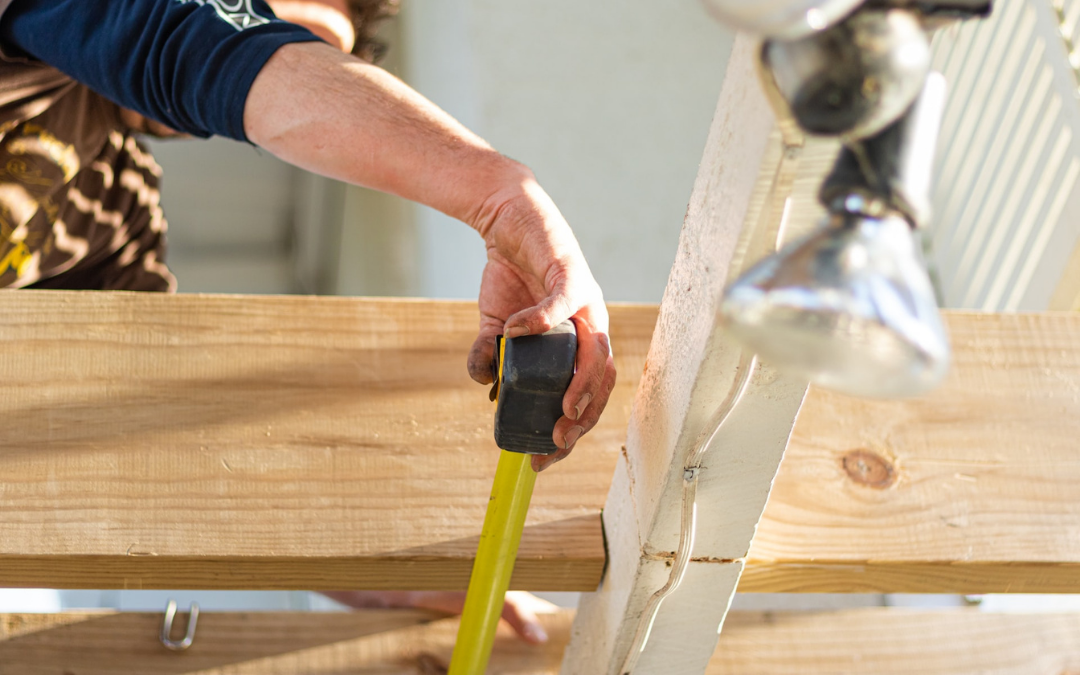The structure holding up the flooring in your property is one of the most important things to get right if you want to flip it profitably. If floors are uneven, sagging, or otherwise damaged, potential buyers will (rightly) feel like they’d have to consider the cost of repair or replacement. Floor joists and subfloors are important to fix for that reason – but how much will it run you? In this article, we’ll look at common floor joist and subfloor problems and provide a cost estimation guide for floor repairs and installation. Let’s get into it.
Overview: Floor Joists and Subfloor Fix
To even begin to fix your floor joists and subfloor, you have to open them up by removing the flooring laid on top. Depending on the type of damage you or a specialist observe as the issue, reckless removal of material might cause more damage. For that reason, you or your contractors should remove the flooring carefully and not more than you need to determine the situation. After, take a look at the floor joists and subfloor to see what needs fixing.
These are signs of some common problems with the subfloor or floor joists:
- Squeaking floors can be a sign of loose nails. Some squeaking is acceptable; however, if the floor is squeaking loudly or in multiple areas, this may be a sign that wood is rubbing against the metal of a loose nail. If the nails holding the subfloor to the floor joists are firmly in place, there is no rubbing. It does happen, though – especially with softwoods – that the wood twists and warps due to moisture penetration and leads to the nail or nails coming loose.
- Sections of the floor sinking down between floor joists or the floor feeling “spongy” usually mean that there are problems with the subfloor or joists. Spongy floors can result from water damage causing the joists and/or subfloor to rot or due to improper installation of the subfloor in the first place.
- Cupping is what happens when wooden floorboards curl up at the edges, creating a cup shape. This is usually due to the bottom of the boards receiving more moisture than the top, leading the opposite sides to expand differently. Cupping can indicate a serious problem with the subfloor. If the floor proper is warping, then it’s likely that the subfloor is affected, too. Using a professional floorboard drying service, you can repair cupping issues (sometimes, not always) without the need to replace the floorboards entirely. That’s on the condition that you’ve addressed the source of moisture.
- Several issues can cause uneven floors. It may be that the subfloor is loose and warped, but it may also be the floor joists that are warped. If both of those are fine, it may be that one or more of the foundations or load-bearing walls have settled or sunk down over time.
Cost to Repair Floor Joists and Subfloor
Here’s a cost estimation for floor repairs. It’s cheaper than replacing joists and subfloors, but you’ll still have to budget carefully and not forget to take into account indirect, associated costs.
Floor Joist Repair Cost
Floor joists can be repaired without having to be replaced entirely through a process known as sistering. As the name implies, a new “sister” joint is fitted next to the old one and fastened to it – after removing the rot on the old joist and treating it to prevent it from coming back. The sister joist reinforces the old floor joist without needing to remove it. Sistering costs, on average, $100 to $300 per joist. Repairing a tilted, wavy, or sagging floor under part of a room could cost $1000 to $3000. If all the joists in the room need to be redone, it’ll cost much more.
Subfloor Repair Cost
Subfloor is easier to repair than floor joists. As such, subfloor repair comes in cheaper, costing $100 – $200 for a small section of a room to $500 – $700 throughout the whole room. That doesn’t include the cost of removing the top floor and replacing it afterward.
Cost To Replace Floor Joists And Subfloor
Here’s a cost estimation for floor installation anew – joists and subfloor alike. Replacing these elements can be costly, but it’s worth investing in to increase the sellability and value of the property.
Floor Joist Replacement Cost
If your floor joists have been heavily damaged by moisture, rot, or termites, your wallet will, unfortunately, be much lighter, as the joists will have to be replaced entirely. It may be necessary to support the house with jacks while the joists are replaced. If the joists need to be replaced in only one section of the house (one room or side), it could cost between $5000 and $10,000. A replacement of floor joists throughout the whole home will run you from $10,000 to $30,000 or more. This price will depend on the following factors: the size of the home; how damaged the joists are; whether there is any damage to the sill; what the ease of access for jack installation and joist removal is (it’ll be cheaper if a contractor can access the joists without having to remove the top flooring); and so on. Sometimes total replacement is inescapable, and you won’t be able to make do with repair or sistering.
Subfloor Replacement Cost
Replacing a subfloor is much cheaper than replacing floor joists, but it will still add up. Replacing the subfloor of an entire room will likely cost around $2000 to $2500. Higher-quality subfloors with more precise installation will cost you more upfront but may save you from contractor mistakes and poor-quality materials coming back to haunt you later. This estimate, again, does not include the price of removing and restoring the top layer of the floor.

